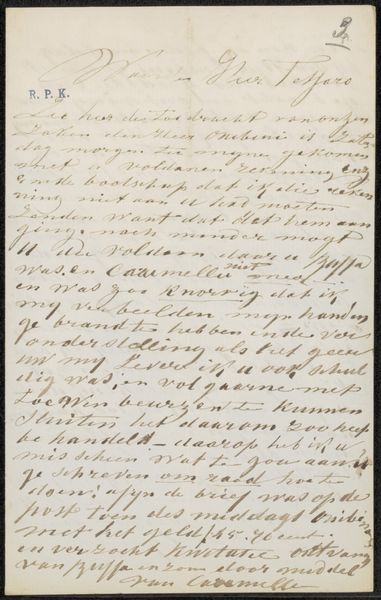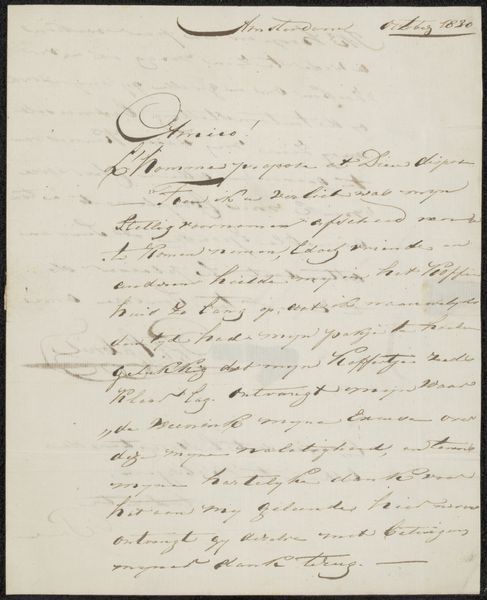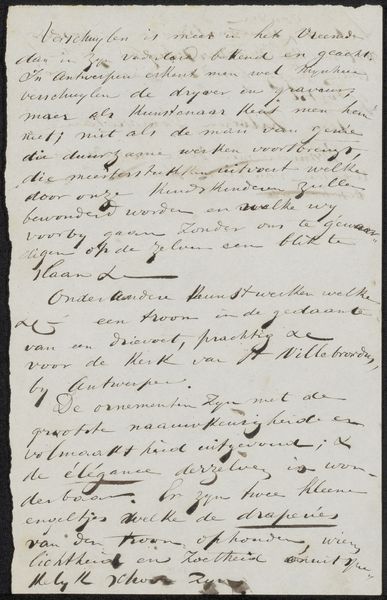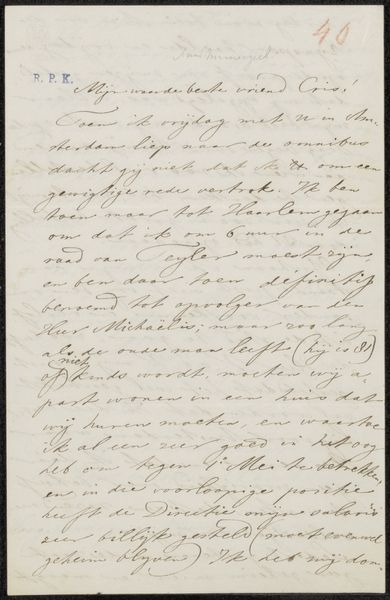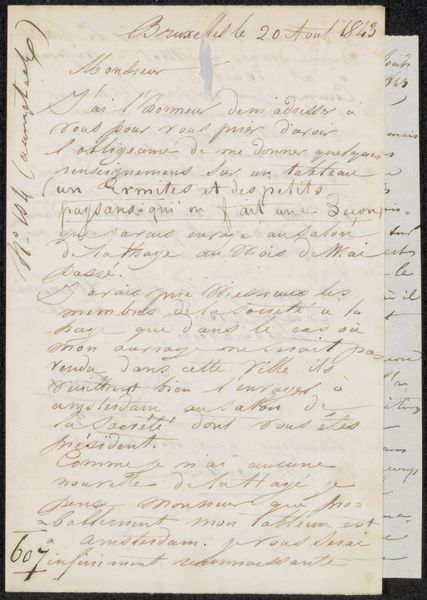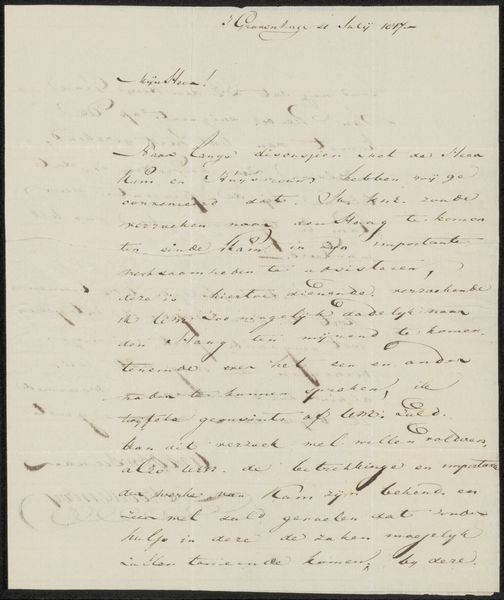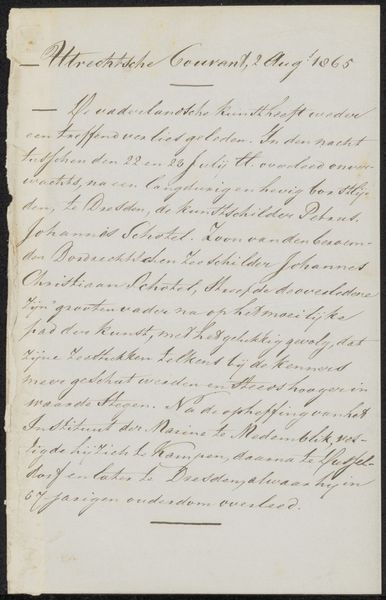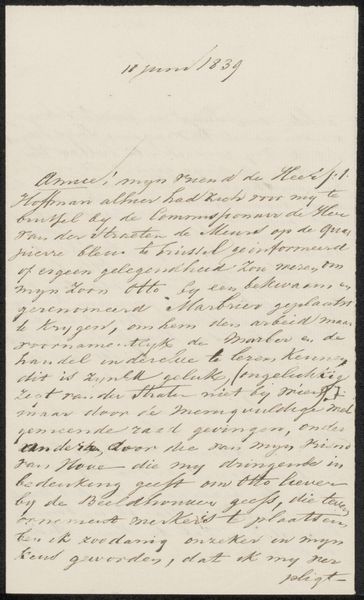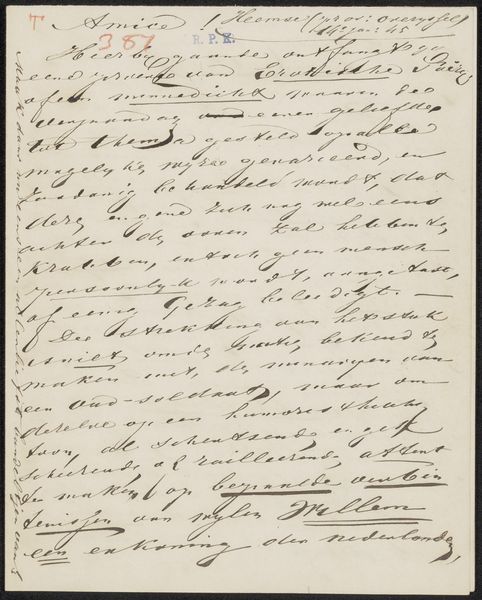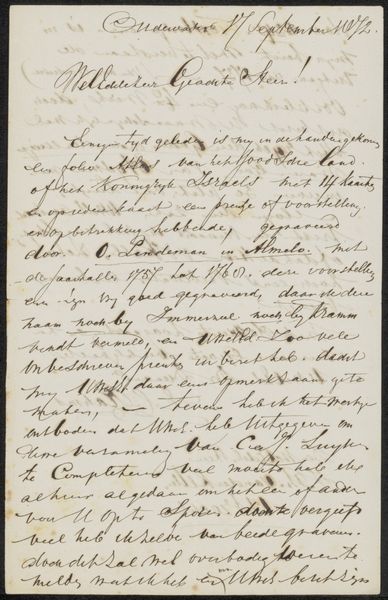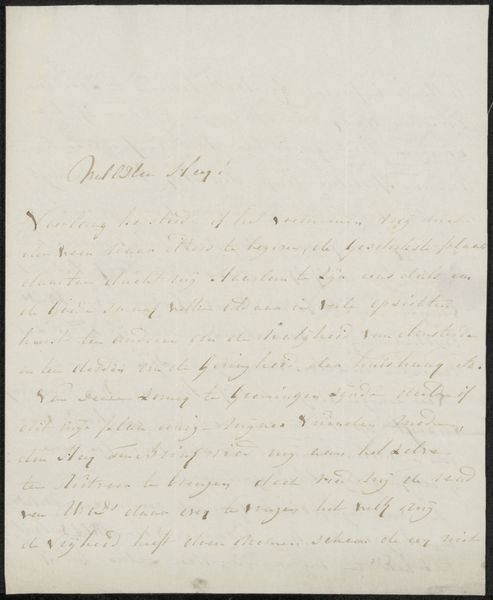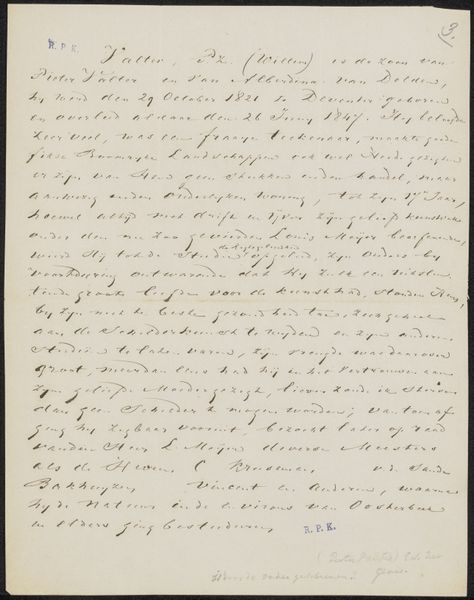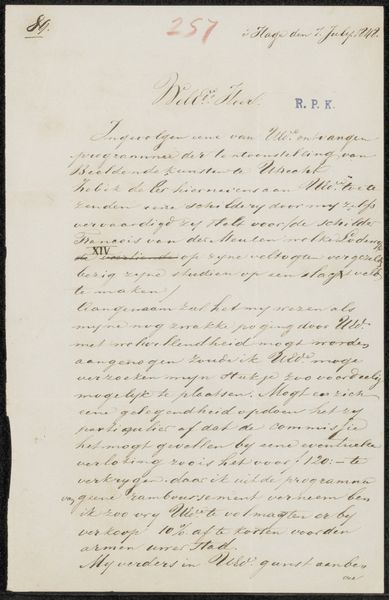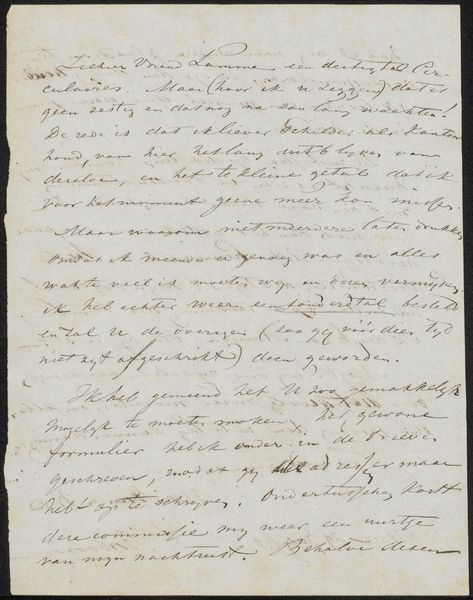
drawing, ink, pen
#
portrait
#
drawing
#
ink drawing
#
ink
#
romanticism
#
pen work
#
pen
Copyright: Rijks Museum: Open Domain
Curator: So, we have here "Brief aan onbekend", or "Letter to an Unknown" by Abraham Krayestein, possibly from 1815, rendered in pen and ink. What strikes you most about it? Editor: It's hard to immediately connect with it. It’s basically a handwritten letter and so difficult to read… It's kind of a monochromatic mess of cursive and antiquated spelling. I struggle to even grasp what the context might be. What is your interpretation of it? Curator: Indeed. Think of the socio-political environment of 1815. Europe is in flux, just after the Napoleonic Wars. Personal correspondence becomes crucial. Now, observe the elegance in the penmanship. Note how the flourishes almost become decorative elements, blurring the lines between functional text and artistry. Considering Romanticism's focus on emotion and individualism, what kind of person do you imagine writing this letter, and under what circumstances? Editor: Possibly someone quite educated, writing to someone of status, based on the style? The text does feel… important, perhaps formal in a way that personal letters are no longer. Do you think it reflects anything about the social structures of the time? Curator: Absolutely. Consider the societal constraints of the early 19th century, the rigid class structures and importance of social standing, and now read this work. It's a fascinating glimpse into the mindset of the period. The "unknown" addressee could represent a desire for connection beyond those prescribed societal boundaries. It is really interesting how social mores create different forms of artistic expression. Editor: It's fascinating how something as simple as a letter can reflect so much of its time. Curator: Indeed. Art unveils our past. Thank you for this analysis.
Comments
No comments
Be the first to comment and join the conversation on the ultimate creative platform.
